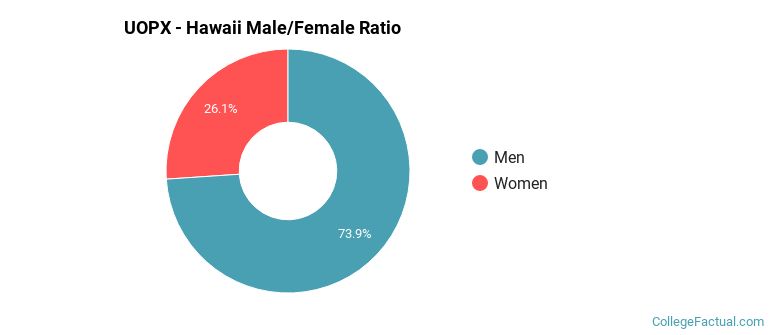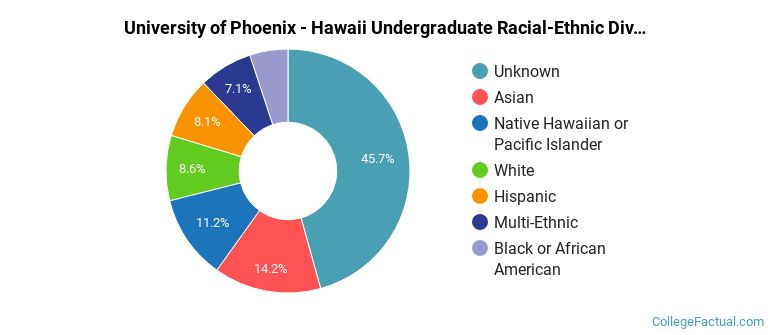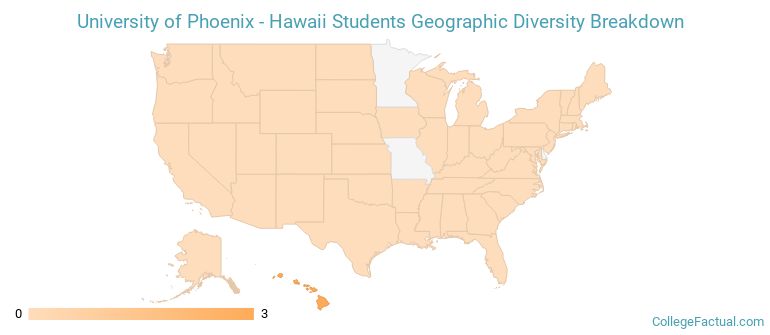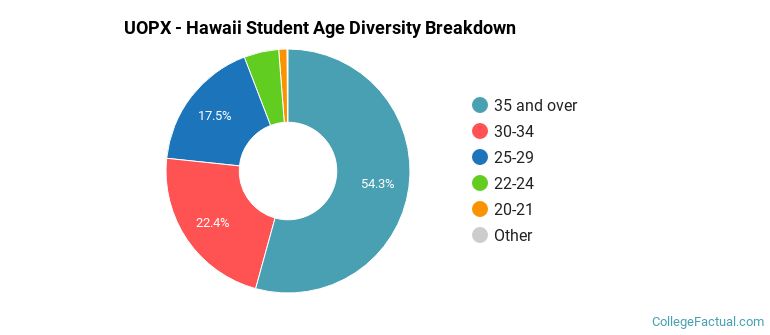 by our College Data Analytics Team
by our College Data Analytics TeamUOPX - Hawaii total enrollment is approximately 117 students. 107 are undergraduates and 10 are graduate students.
Male/Female Breakdown of Undergraduates
The full-time UOPX - Hawaii undergraduate population is made up of 30% women, and 70% men.

For the gender breakdown for all students, go here.
UOPX - Hawaii Racial/Ethnic Breakdown of Undergraduates

| Race/Ethnicity | Number |
|---|---|
| Unknown | 51 |
| Asian | 15 |
| Native Hawaiian or Pacific Islander | 11 |
| Hispanic | 10 |
| Black or African American | 7 |
| Multi-Ethnic | 7 |
| White | 6 |
| International | 0 |
See racial/ethnic breakdown for all students.
Male/Female Breakdown of Graduate Students
About 20% of full-time grad students are women, and 80% men.

For the gender breakdown for all students, go here.
UOPX - Hawaii Racial-Ethnic Breakdown of Graduate Students

| Race/Ethnicity | Number |
|---|---|
| Black or African American | 2 |
| Hispanic | 2 |
| White | 2 |
| Unknown | 2 |
| Asian | 1 |
| Native Hawaiian or Pacific Islander | 1 |
| International | 0 |
| Multi-Ethnic | 0 |
See racial/ethnic breakdown for all students.

| Race/Ethnicity | Number |
|---|---|
| Unknown | 53 |
| Asian | 16 |
| Hispanic | 12 |
| Native Hawaiian or Pacific Islander | 12 |
| Black or African American | 9 |
| White | 8 |
| Multi-Ethnic | 7 |
| International | 0 |

There are approximately 34 female students and 83 male students at UOPX - Hawaii.
UOPX - Hawaii ranks 2,080 out of 2,183 when it comes to geographic diversity.

The undergraduate student body is split among 1 states (may include Washington D.C.). Click on the map for more detail.

| State | Amount |
|---|---|
| Hawaii | 3 |
| Alaska | 0 |
| Alabama | 0 |
| Arkansas | 0 |
| Arizona | 0 |
A traditional college student is defined as being between the ages of 18-21. At UOPX - Hawaii, 1.21% of students fall into that category, compared to the national average of 60%.

| Student Age Group | Amount |
|---|---|
| 35 and over | 400 |
| 30-34 | 165 |
| 25-29 | 129 |
| 22-24 | 34 |
| 20-21 | 8 |
| 18-19 | 1 |
| Under 18 | 0 |
Footnotes
*The racial-ethnic minorities count is calculated by taking the total number of students and subtracting white students, international students, and students whose race/ethnicity was unknown. This number is then divided by the total number of students at the school to obtain the racial-ethnic minorities percentage.
References
Department of Homeland Security Citizenship and Immigration Services
Learn more about how College Factual creates their Diversity Rankings.